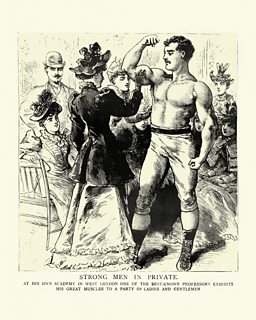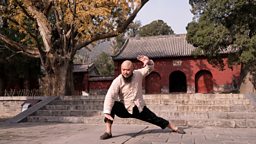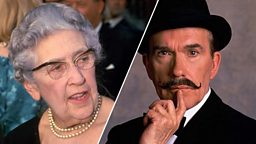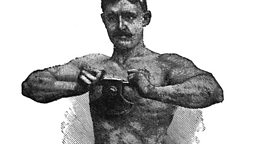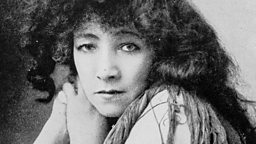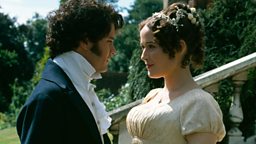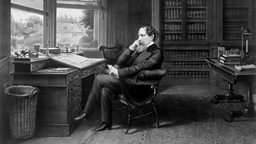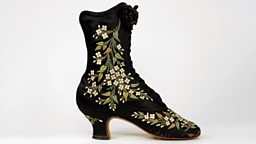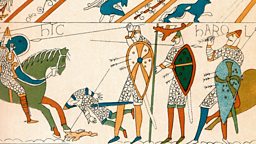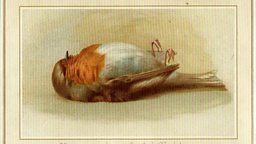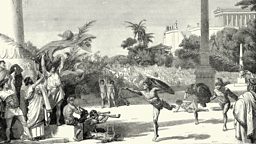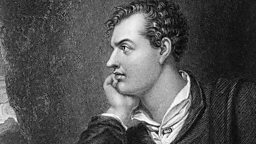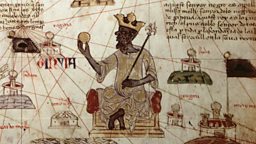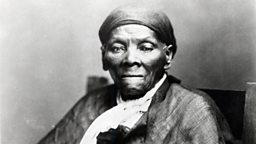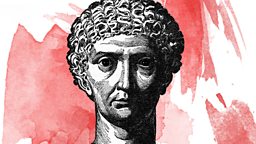Eight athletic anecdotes about the history of bodybuilding
Nowadays, our social media feeds are full of gym selfies and exercise routines, and blockbusters are populated by seriously hench superheroes. But what was bodybuilding like before Arnold Schwarzenegger, The Rock and endless adverts for protein powder?
On the Radio 4 history podcast You're Dead To Me, Greg Jenner learns all about bodybuilding in the 19th century. These are some of the muscular moments they discussed...
1. In ancient Greece, instead of dumbbells they used… cows
Credit for inventing weightlifting is usually given to the ancient Greeks, although these kinds of exercises also seem to have been popular in ancient Egypt, China and India. One particularly muscly Greek guy – Milo of Crotona, who lived in the 6th century BCE – apparently liked to show off how strong he was by carrying calves around on his shoulders. In one version of the story, we’re told it was actually a full-grown bull that he could lift!
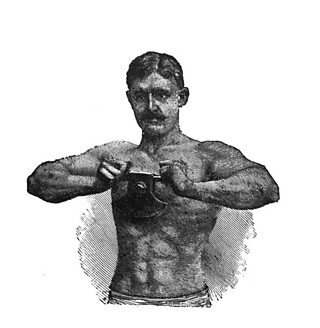
2. Benjamin Franklin’s recipe for long life: no wine and lots of weightlifting
18th-century American intellectual Benjamin Franklin was a big fan of weightlifting. He believed that the more warmth the body produced while working out, the better the exercise, and noted that “in 40 swings” of the dumbbell he could increase his pulse from 60 to 100 beats a minute. When he was 80 years old, he wrote to a friend that the secret to his long life was no wine and daily exercise with the dumbbell – not that different from a modern-day fitness influencer!
3. Bodybuilding as we know it was born in the 19th century
Bodybuilding, gymnastics and fitness culture – the forerunners of our modern gym culture – came about in Europe in the second half of the 19th century. With the invention of the lightbulb, people could exercise indoors after work in the evening, and middle-class people now had more time and money to pursue leisure activities.
A French man, Hippolyte Triat, opened gymnasiums in Brussels and Paris where people could lift weights, climb rope ladders and practise tightrope- walking. In 1865, the largest gymnasium in the world was opened in Liverpool.
4. Want to be “beyond average”? Why not try an exercise machine?
A 19th-century Swedish doctor, Gustav Zander, invented some of the first exercise machines, which he used to help workers correct physical impairments. Wealthy clients also started to buy them as something of a status symbol.
An American, Dudley Allen Sargent, was also an early inventor of fitness equipment, which he said would allow people to become “more average”, or maybe even “beyond average”. Sargent had been a circus strongman, and in 1869 he became the gymnasium director of Bowdoin College in Maine after beating one of the students in a boxing match.
5. Eugen Sandow: the first modern bodybuilder
Eugen Sandow – born Friedrich Müller in Prussia in 1867 – was the first modern bodybuilder. He was inspired to begin weightlifting and strength training after seeing classical statues on holiday with his father in Rome.
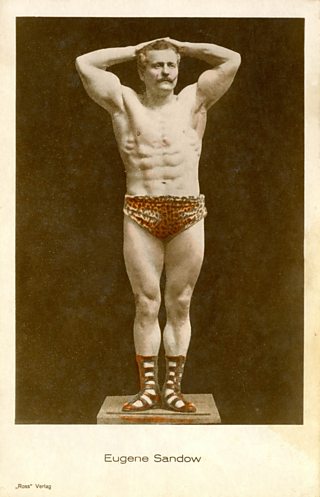
As a young man, Sandow tried to find work as a strongman in Amsterdam, but several theatres turned him away. So he roamed Amsterdam at night, destroying public strength-training machines. The authorities assumed this had to be the work of a criminal gang, but Sandow turned himself in and showed that he had only been using the machines as designed: he had just broken them with his superhuman strength! He was immediately given a job as a strongman.
6. Sandow would have done well on social media
Eugen Sandow was an expert in showing off and promoting his body. On stage, clad in nothing but a leopard-print loincloth, he posed in a specially designed box, with lights fitted at just the right angles to show off his muscles. He also offered private paid viewings, where admirers could see and touch his body. Photographs of him, in the nude and in his loincloth, were hugely popular with both men and women. He even wrote an exercise book, Strength and How to Obtain It, and published the first fitness magazine, Physical Culture, in 1898.
7. Bernarr Macfadden was America’s answer to Sandow
American bodybuilder and fitness enthusiast Bernarr Macfadden was born Bernard McFadden in 1868, but changed his name to Bernarr because he thought it sounded like a roar! Following in Sandow’s footsteps, he founded a magazine called Physical Culture in 1899, where among other things he campaigned against restrictive corsets and advocated for vegetarianism and raw food diets.
In 1913, Macfadden married his third wife, Mary, who had won “Great Britain’s Perfect Woman” contest which he had judged. To prove how strong he was, they performed a stage act together where she would jump onto his tensed stomach from a high table. This continued even when she was pregnant!
8. The only person who could beat Sandow was a woman
In 1902, Eugen Sandow was bested in a weightlifting competition in New York. His competitor? Katharina Brumbach, who after beating Sandow took the name Katie Sandwina. Katie was born into a family of circus performers, and in a famous photograph she is shown demonstrating her incredible strength by lifting up three men, all dressed in smart evening wear.
Want to buff up your knowledge? Listen to the Victorian Bodybuilding episode
